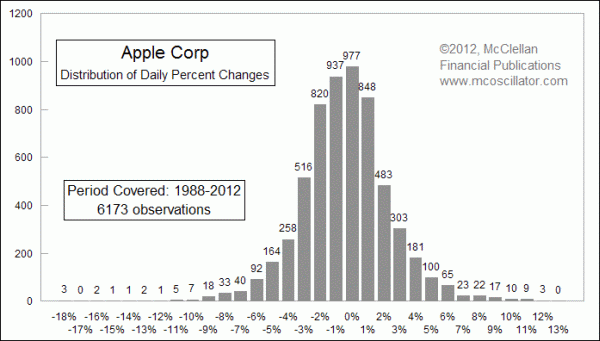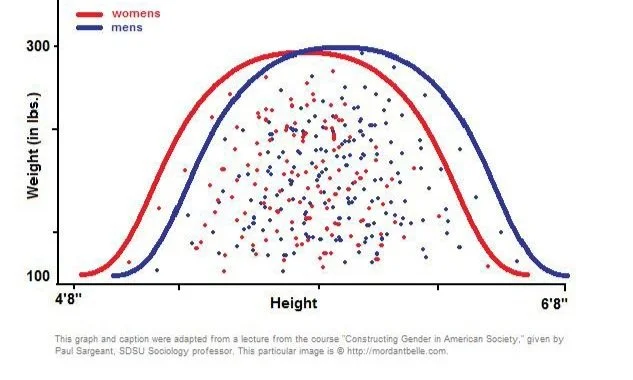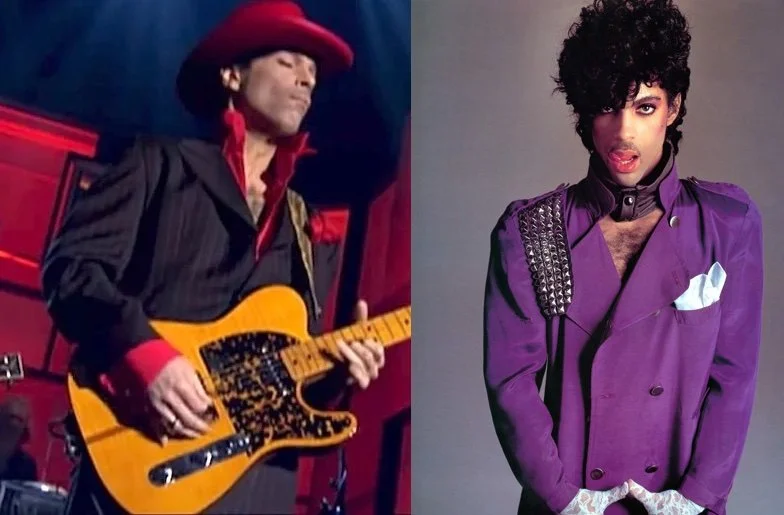What is a Man? (and why does it matter?)
What is a man? Vulnerable? Gentle? Powerful? Big biceps? Penis? Tall? Strong? Innovative? Loyal? Logical?
On the Left, more and more say a man is whatever you want it to be — penis or vagina, boobs or pecs, loaded with testosterone or almost none of it, masculine or feminine — it makes no difference. A man, or a woman, is a form of self-identity, freed from any biological constraints. If you say you’re a man, it’s my job to accept it and society’s job to validate it.
On the Right, more and more say that a man, or a woman, are constrained by their biology if not outright defined by it, and all of this talk of “identity” runs the range from irritating to an existential threat on traditional gender roles. Conservatives say that a man and woman are defined by their biology first and foremost, and that there is no burying or obfuscating that truth.
Who should we believe?
The documentary What is a Woman, by Matt Walsh was a funny and provocative right-wing critique of the current transgender rights movement (my politics have been historically very left, for the record). What Mr. Walsh does well is ask people a seemingly simple question, what is a woman? The humor comes from the advocates of trans rights digressing into paradox or paralysis when attempting to answer the question — mainly because they’re fighting to be accepted “as a woman” but then unable (or unwilling) to define what that actually means.
The reason they generate paradox and don’t know how to define a woman in a way that's intelligible is because they're trying to define a woman in a unipolar sense — in a singular way. When you do that, it's easy to create an argument that doesn’t stand up well to scrutiny. (The Right’s definition, as we’ll see, also has big problems with it.)
Let’s start, then, at the beginning, and define our conversation in a way that will make sense no matter if you’re on the right of this topic, the left of it, or somewhere in the middle.
It Takes Three Legs to a Steady Stool Make
When it comes to the cultural definition of what is a man, the answer can’t be focused on a singular place — a man isn’t just biological, nor psychological, nor cultural. It’s all three, all at once. In other words, masculinity is a multipolar phenomena.
When we talk about men or women and how to define them, the multipolar phenomenon involves three disparate things like three legs of a stool. All three of these things are needed equally or the stool will topple over.
The wars raging in our culture now are almost entirely because people focus on one, or two, of the three legs of the stool, and so their arguments are not only unstable, they’re inaccurate and therefore easily dismissed by the other side. But the other side counters with its own bad arguments, and so the debate is an endless parade of bad ideas and poorly thought-through concepts.
Let’s explore the three legs of the stool. But first, a short primer on a topic central to understanding this: the bell curve.
Bell Curves
The bell curve depicts the mean, the mode, and the median of a data set. The only two numbers that really matter to us are the mean and the standard deviation.
The center is the mean, and the wideness of the curve is the standard deviation. These are used to crunch data and are incredibly powerful in parsing information. Here are three common bell curves.
IQ scores: They often present a bell-shaped curve across all sorts of different populations. Most people score as average and fewer stand out with exceptionally low or high scores.
Stock values: Financial analysts utilize bell curves to determine potential stock pricing and risk. Stocks known for volatility often do not follow the bell-shaped continuum. If you can find a stock with a true bell curve, it indicates future returns will, on average, occur at the same rate and in the same fashion as past returns.
Test results: High school students who take the SAT provide a large sample size for statisticians. These test scores almost always appear as bell curves—most students obtain the same standard score while a few exceptions test at a higher or lower percentile.
This will be helpful as we unpack sex and gender. But first, let’s dive into something that isn’t a bell curve: genetics.
Leg One: Biology
Genetics is the single most deterministic factor in determining sex. Sex is male or female. Gender is the spectrum of masculine to feminine.
Men have an XY chromosome and women two X chromosomes. With humans, or any great ape, when you get that set of chromosomes that leads to the development of all kinds of secondary sex characteristics, which we'll get into in a minute.
Intrasex births are when people are born with secondary sex traits that are mixed, like a single testicle and a partial vagina. The main problem is there is no set definition on what intersex actually is, and so liberals and conservatives have, predictably, emphasized different parts of the debate.
This creates an interesting political fight. If you Google, what is the occurrence of intrasex marriage, you will get a result of 1.7 %. That number makes intrasex birth about as common as red hair, about 1 in 200 births, give or take. It's still rare, but the idea is, “Well, I know a redhead or two.” Which makes intrasex seem pretty common, all and all — which is why, of course, the Left prefers that definition.
The trouble with their data set is that when you talk to geneticists, or if you look at places like the National Institute of Health or the National Library of Medicine, they give a more precise definition of intersex as being “restricted to those conditions in which chromosomal sex is inconsistent with phenotypic sex, or in which the phenotype is not classifiable as either male or female.”
In other words, the only true intrasex births are ones where chromosomal sex (male or female) is inconsistent with the phenotypic sex (secondary sex characteristics — boobs or balls).
Wikipedia does a pretty good job of summarizing the two conflicting sets of interpretation:
“The number of births where the baby is intersex has been reported differently depending on who reports and which definition of intersex is used. Anne Fausto-Sterling and her co-authors suggest that the prevalence of ‘nondimorphic sexual development’ might be as high as 1.7%. A study published by Leonard Sax reports that this figure includes conditions such as Klinefelter syndrome (XXY) which most clinicians do not recognize as intersex, and that if the term is understood to mean only "conditions in which chromosomal sex is inconsistent with phenotypic sex, or in which the phenotype is not classifiable as either male or female", the prevalence of intersex is about 0.018%.”
A pie graph depicting the two interpretations of data.
I don't want to get hung up in this argument or take a stand on one of these data sets because it doesn't really matter. It doesn't change the meta argument and the meta view that intrasex birth is extraordinarily rare. The NIH puts it at about 1 in 5,000 births. Even if we accept a number of 1.7%, or 1 in 200 births, that still means that more than 98 % of births are strictly binary male-female. Either way, whether it's 99.98 % of births or 98 % of births, almost all births are clearly biologically male OR female.
You can’t create a bell curve out of the 1.7% number because the standard deviation is too small — it’s too narrow to be a bell curve — 98.3%, or the NINh’s 99.98%.
Secondary Sex Characteristics
When you get the XY combination, the male genetics in the human animal, we end up with all kinds of secondary sex characteristics: facial hair, male genitalia, thicker bones, bigger muscles, stronger tendons, greater height.
Here’s the average height and weight of men versus women, two secondary sex characteristics, on a bell curve:
The most dimorphic bone in the human body is the pelvis, and male and female pelvises are quite different — but also on a bell curve, which does in fact mean the most “masculine” looking female pelvis may look quite similar to the least “masculine” looking male pelvis. Those, however, will be extraordinarily rare because they are on the far sides of the bell curve, in the same way it’s very rare to have someone with an IQ of 175 or 55.
We can take testosterone. Men have anywhere from 10 to 100 times the level of testosterone that women have. Men on average are about 10% taller than women. They have, on average, bigger bone mass, bigger muscles, stronger tendons, wider rib cage, taller pelvis, more facial hair, etc.
If you go from that mean — average — masculine secondary sex trait and out to the far right edge, you’ll find men that are extremely muscular, extremely tall, extremely fast, extremely athletic. Professional basketball players, football players, soccer players, weightlifters, MMA champions, tennis players, X-Games winners, are all out outliers on their secondary sex traits. If you go to the far left side, you're going to see men that are short in stature, thin, maybe have very little facial hair, smaller muscle mass, etc. and where you will find the average woman is bigger, stronger, probably faster than the men on the far left side of the curve.
Men on the far right side and the far left side are both men, however. But the expression of their secondary sex characteristics can be on this wide spectrum. And that’s hugely relevant when it comes to culture.
This matters because the determinacy of genetics means sex can't be just reduced to sociology or psychology, as some of those on the Left are attempting to do. When you look at who dominates athletics — the best of the best — it's all men, from boxing to swimming to shotput to downhill skiing.
The world's best male tennis player will destroy the world’s best female tennis player even though both would destroy the average male player. If you take the world's fastest woman and put her against the world's fastest man, same thing. (In fact, the fastest women in the world compete at a level with the best male high school runners.)
This isn't biased. This isn't sexism. This isn’t patriarchy.
This is biological reality because the secondary sex characteristics, driven by biological determinism, create extreme differences in the sexes (male or female) when we push to those edges of the bell curve.
I want to be really clear about this.: if you take the middle of the secondary sex characteristics, the middle of the bell curve — an average woman and an average man — and have them box or compete in downhill skiing or track and field or tennis, the chances are the man would win, yes, but there would be tons of exceptions based on skill and technique.
Men might have that 10% edge on average, but skill and experience can more than compensate for that. Challenge me to a game of tennis and watch me lose, quickly, to anyone but the most anemic 90-year-olds.
Leg Two: Culture
The second multipolar factor needed to answer the question What is a Man — the second leg of our three-legged stool — is culture, or sociology. Here things get complicated.
There is a gender definition of what is a man should be. There's a gender definition of what is masculine. This is also in a bell curve. While the far side of the bell curve in a culture, in a time period, might be an Arnold Schwarzenegger type of muscular or a Clint Eastwood or Cary Grant stoicism. Maybe that's how we would define men, culturally, on one side of the bell curve.
Over on the other side, maybe it would be a Woody Allen type, neurotic, wiry framework, complaining, and clearly couldn't punch their way out of a paper bag. Or the Liberace type, for those old enough to remember him. The definition of a man in culture is completely dependent on that culture, whether it's a macro culture like a nation-state or microculture like a social group.
When I was traveling through Thailand, I can tell you that the definition of what a man is in Thailand is very different from what it is in Texas. Really different.
It gets even more confusing if we think about what the ideal is here for us in the West now? Is it Chris Hemsworth, a Thor with those big biceps, the beautiful body, the deep voice, the great hair? Is that something archetypal about what a man is, a warrior, tough, muscular, tall, handsome?
Maybe, but virtually every woman I know thinks that Prince was unbelievably attractive and deeply masculine.
Prince was 5 '2, wore purple, was very metro and androgynous in his expression of his masculinity. Chris Helmsworth is 6’ 4”. Both are men. And they have very different secondary sex characteristics. In some ways, these guys are on the opposite sides of the secondary sex characteristics bell curve.
Yet, culturally, most would agree that they're both pretty goddamn masculine. Or we think of Benedict Cumberbatch versus, say, Hugh Jackman. There's lots of ways that we can see that our culture tends to hold broad definitions of what can be masculine and what can be attractive in that and what traits we might find there — physical, emotional, and mental.
Macro Cultural Views of Masculinity
Defining a man, culturally, depends on the pressures and opportunities in that culture. (What follows is an oversimplification, but this is a blog not a book — that book may be forthcoming one of these days.)
Power-based cultures are ones where might makes right and the rules are created by the person in charge. We can think of Genghis Khan. He didn't build elaborate rules and structures for governance based on persuasion and his mastery of creating laws to enshrine his vision. He ruled by might and by intimidation and by having absolute subservience, which is why his empire crumbled almost immediately after his death unlike, say, the Roman Empire or the British one.
Power-based cultures would also include things like gangs and the mafia, where the “don” or “boss” decides what is and isn’t allowed, where the rules may not apply to him, and where obedience is based in fear of reprisal. Respected masculine values here would include the secondary sex characteristics of speed, agility, power, strength, willpower, those who can fight and kill, and those who are willing and able to be violent, but also cunningness, ruthlessness, fealty to the boss’s wishes and commands, and the like.
Rule-based cultures have rules that, at least theoretically, apply to everyone or at least almost everyone. The Catholic Church ran much of the world under a set of rules, as did feudal empires and monarchies. When there are rules that transcend the rulers, physical strength is less valued. What's really valued are things like strategy, cunning, bravery, charisma, the ability to lead and control, and instead of fealty to a powerful lord, loyalty to a code or belief that transcends a ruler (anyone want to get burned at the stake for, say, being Chrisitian?). Anything that has the ability to keep chaos at bay and keep things ordered is going to be valued in a rule-based society.
The men that have this capacity to keep chaos at bay are going to have those secondary sex characteristics and those physical, emotional, and mental traits that allow them to excel. The king isn't going to be the biggest warrior in the room. The leader of the church, the Pope, isn't going to be able to bludgeon people with his fists. An emperor can rule long after he has lost the capacity to win a fist fightt. Their power comes from their ability to control something much more complicated. It moves out of the realm of power, out of the realm of strength, and what becomes masculine and desirable is more around emotional and mental traits.
(And yet, this gets complicated, because men like Abraham Lincoln wrote letters to other men that, by today’s standards, were remarkably intimate and emotionally vulnerable in ways most heterosexual men would find off putting. Stuff for that book.)
Rulers in these cultures will need henchmen, military, police, and enforcers who most definitely will have muscle, speed, cunning, and raw strength — but it’s more valuable to be able to lead and inspire strong men than to be one.
Status-based cultures like the United States value men that acquire wealth and with it, status. Elon Musk — 300 billion, or whatever his net worth currently is. Jeff Bezos. Bill Gates. Dr. Dre. George Soros. Jay Z. Peter Thiel. Men that have a lot of money have a lot of power and, because of that, they are admired. What are the things that make those people successful? Well, they're hard working, disciplined, ruthless in some ways, uncompromising, brilliant, innovative. They lead by inspiration (Musk) or, if necessary, by sheer force of will (Steve Jobs), or even by a narrow vision of maximized profit and consolidation of power (Bezos).
Status-based cultures can also admire things like logic and intellectualism. We admire John Locke, Adam Smith, Ben Franklin, Einstein and Freud and Sagan — men with discerning intellects and a capacity to be rational, to parse apart reality, and to help us understand the world in a better way. Physical power here is not relevant, unless you’re talking about professional athletics. Even the police in a status-based culture are just as likely to be overweight and out of shape as not, because their physical power is augmented with the technology of the culture — guns, body armor, tasers, the “back up” support of the government and its institutions, etc.
Pluralism-based cultures are rarer, but we find much of Western Europe has moved there, as have pockets of the U.S. Here, men are preferred who are equitable, who are concerned with fairness (not justice, as they are in achievement-oriented cultures), who are able and willing to sideline their secondary sex characteristics in favor of allowing the representation of underrepresented people and groups.
These men are willing to not speak up so someone else can, and to not do or say things that might make someone else uncomfortable (Elon Musk or Steve Jobs give precisely zero fucks if what’s said makes you uncomfortable). These kinds of traits, then, are more sought after in the masculine in a pluralistic society.
Integrated cultures only exist at a micro level right now, but those would be ones that see the value of all of the above. They can see the value of how all these different definitions of masculine and what a man are can all be correct (if partial)I useful, noble, and worthy of protection. Each may have a time and a place to be necessary.
Leg Three: Psychology
Sex is binary. Gender is infinitely variable and culturally dependent. It's not fixed to any platonic ideal, because pluralistic societies tend to dismiss things like protection, loyalty, service, strength, and the like as cultural trappings of either a bygone era, or part of a patriarchy that needs to be dismantled.
When it comes to psychology, it’s very simple: how do I view myself? Do I consider myself a man? Do I consider myself a woman? Do I consider myself neither? I identify as a man. I identify as a woman. I identify as neither. These are all completely true and valid subjective statements. There's no arguing with them.
Depending on the culture in which you live, that psychological truth may or may not be honored in the greater macro culture. If you live in a power-based or rule-based culture — Iran, or China, Saudi Arabia, you may identify as a different gender than your sex at birth, but you are not going to get that culturally validated. In fact, you may actually get killed because of it, which is heartbreaking.
In a pluralistic society and, to a lesser extent, in achievement-oriented societies, if you identify as a woman or a man or neither, and that doesn't line up with your biological birth, it's okay. It's more welcomed in pluralistic societies and it is more defended, fought for, even encouraged. Should a school be required to honor a child's sexual identity if that’s different from their biological birth? Your answer to this largely depends on your cultural view, but it also depends on how hard advocates are pushing, and the soundness of their argument.
Which is what we’ll get into next.
So … What is a Man?
It’s three things. It's always three things, and you can never reduce any one of them to the others.
Biological — the binary of an XY or XX chromosome, as well as the secondary sex characteristics which occur across a bell curve.
Sociological/Cultural — the needs and values of the macro or micro culture will influence which secondary sex characteristics are most desirable.
Psychological — how does an individual see themselves? This could be as a man, a woman, or something else, and can be independent of the other two factors.
Power-based societies are going to want the big, strong, strapping men. But in pluralistic societies, big, strong strapping men don’t really mean anything. There's no value in being the biggest and strongest man at a group discussing diversity and inclusion — truly no value at all — and, in fact, if you’re not mindful it might actually work against you. It doesn't mean much in an achievement-oriented society unless you're an athlete or part of an elite military force. It doesn't mean much in a rule-based society unless you're the enforcer of the rules, a farmer, or someone whose livelihood depends on strength.
On the Right
Here, they get and understand the biology leg of the stool. It’s undeniable determinacy is seen accurately, and it strains credulity — in biology — to say that a self-identified man with a vagina is the very same as a man with a penis. Conservatives have a hard time when they are told “a trans woman is a woman, hard stop.” Their argument boils down to, “Look, if you have an XY chromosome with a cock and balls, you're not a woman the same as my wife, my daughter, my mother. You're something else — maybe no longer a man, but not indistinguishable from a biological woman.”
There's a truth in the primacy and the hard reality of that biological determinant. But on the Right, they tend to ignore psychology, and they tend to ignore culture.
They don't honor the fact that I may identify as a woman, and I have a right to do that. I may live in a culture that I'm trying to change so that I can feel that way and the culture will honor how I am and they will let me have the rights and responsibilities of the sex that I feel is my own.
Trying to change the culture leftwards towards greater human rights shows an effective history, from the Civil Rights Movement to the Women’s Liberation Movement to the Gay Rights Movement, and now where we are today — Trans Rights. Conservatives have fought all of these movements (and in so doing have also been on the wrong side of history), but to their credit the majority of conservatives have made enormous strides in their embrace of equality for all. The vast, vast (vast) majority now supports the full rights of blacks and of women.
Yet my point is those successful movements were using more honest arguments.
On the Left
The problem with the Left, or at least the activist, vocal part of it, is they are making a huge mistake. They try to negate biology. National Public Radio likes to say, “So and so, who was assigned a male gender at birth…” as if it was arbitrary, the way you might assign a name. The activist's argument is, “If 1.7 % of births are intersex, sex isn't a binary. Sex is basically a social construct. Your sexual identity is assigned at birth and therefore can be changed by an individual and a culture.” This is an inaccurate oversimplification of a complex, multipolar dynamic, with them valuing two of the three legs of the stool — still making it unstable.
Gender is absolutely a social construct, as we’ve seen. But sex is not.
Now, some on the left will get into minute facts and gray areas of genetics and the expression of secondary sex characteristics, and play up the always-uncertain edges of science. Yet this too is sloppy — it is akin to when the Creationists, a couple of generations ago, tried to bring Creationism into public schools. The way they did it was they said, “Evolutionary theory is just a theory. Because it's a theory and not a fact, you should be able to ‘teach the controversy,’ We want to bring Creationist views in as an equally valid other theory that explains evolution.”
Which is, of course, complete bullshit. It's totally philosophically disingenuous because as we all know, evolution is a theory — that's being very honest. But it's a very, very, very well established, well-tread on, well explored, and accepted theory with supporting evidence in fields as dispeate as astronomy, genetics, paleoanthropology, geology, and more.
Playing up the uncertainties in the theory of evolution is sneaky and scientifically disingenuous. I am arguing the trans activities are making the same mistake. They're trying to undermine what's actually settled science in the field of genetics and trying to turn that over so that the person on the right can't make their argument around the biological leg of the stool.
Those making this argument don’t understand that in doing so, they are undermining their own position and making it hard for educated laypeople, scientists, philosophers, and others (like this writer) to support them. You're not going to win me over by making a bad argument.
We have two bad actors making bad arguments on both sides — Right and Left — and it's a mess. The only way out is for both sides to acknowledge the reality of the entire stool, of the entire matrix of defining sex and gender. Both will lose something if they do so, and both will gain something as well.
Why Does It Matter?
If we can't define what a man is lucidly, then we can't aspire to be that thing if we are men. Or we can't encourage our partners to be that if we are women and with men, or men with men, or nonbinary people with men, and we can't help each other to be better at whatever this thing is.
I've been in a men's group with the same group of men for more than 15 years now. Crazy. It is a men's group — it means it's all men. We all have XY chromosomes. We exist on a wide spectrum of secondary sex characteristics, and we support and challenge each other in ways that have utterly changed my life.
When asked to join, 15 years ago, my response was simple: “Why would I want to be a in group of men? To be bullied? To be made fun of? To hear sexist jokes?” I didn’t really like, or trust, men back then. It took me some time to learn that there is a kind of masculinity that’s different from what we’re taught, and what we’re led to believe.
My personal definition of what is a man, a healthy man, is as someone who's courageous, humble, powerful, embodied, wise, strong, selfless, honest, well-boundaried, intelligent, caring, charismatic, independent, steady, vulnerable, open-minded, gracious, kind in most situations but clear and strong when necessary. That's my personal definition — sometimes I fail to embody many of these things. But it’s what I aspire to be and how I hold myself, and those men in my inner circle, accountable.















